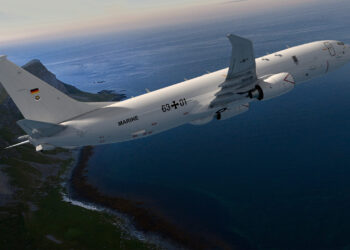UK Ministry of Defence, The Royal Navy's nuclear-powered attack submarine, HMS Torbay, is returning to the Fleet following a year-long £8M refit at HM Naval Base Clyde, Faslane, which has equipped her to be the most powerful boat in the fleet.
In addition to routine maintenance work, the Trafalgar class submarine has been upgraded to carry the latest longer-range Block 4 version of the Tomahawk cruise missile and an improved version of the world-leading Sonar 2076 system.
Baroness Taylor, Minister for Defence Equipment and Support, said: “This overhaul is part of a vital programme to ensure that our Trafalgar class submarines remain at the forefront of Britain's underwater operational capabilities until the end of the next decade. HMS Torbay will undoubtedly bolster the potency of our submarine fleet with her new missiles and improved sonar systems.”
Capt Ian Lofthouse RN, from the MoD Defence Equipment and Support In-Service Submarines Project Team, said:
“I believe HMS Torbay's overhaul demonstrates an excellent collaboration between the MoD, Royal Navy and the two Babcock Marine sites. It represents a significant upgrade to support Torbay through her forthcoming operational life, ensuring her key place in submarine flotilla operations into the future.”
The refit comprises routine maintenance activity as well as the opportunity to incorporate upgrades. Around 400 military and civilian personnel were employed on the project at Faslane.
The advanced Sonar 2076 is a fully integrated system comprising bow, flank, fin and towed arrays that can track an object the size of a bus at a distance of more than 50 miles. New communications equipment will allow internet access even when the submarine is deep underwater, and a new charting system is due to be trialled on board.
Following sea trials and sea training over the next few months, HMS Torbay is expected to be fully operational by the summer.
Background Information
1. HMS Torbay is one of seven 5,200 tonne Trafalgar class nuclear-powered submarines, and entered service in 1987. All of the class are based at HM Naval Base Devonport, in Plymouth.
2. Under the Swiftsure and Trafalgar class Final Phase Update programme, the newest four Trafalgar boats are being upgraded to bring their equipment up to the standard of the successor Astute class.
3. The overhaul for HMS Torbay is part of a programme to upgrade all the Royal Navy's Trafalgar Class submarines, and ensure they remain at the forefront of Britain's underwater warfare capabilities until the end of the next decade
4. The 84m long Trafalgar class boats are armed with Spearfish torpedoes, Tomahawk cruise missiles and Sub-Harpoon missiles. They carry 130 crew and can remain submerged indefinitely. The reactor needs refuelling on average only twice during the boat's service life.
5. Tomahawk Block IV missiles are built by Raytheon in the US, with missile electronics supplied by its subsidiary in Glenrothes, Fife. BAE Systems and Ultra Electronics in Middlesex have also played a key role in electronics and other aspects of the submarine upgrade to enable launch of the new missile.
The latest version of Tomahawk, successfully tested by the Royal Navy last year, is more responsive and flexible than its predecessor and at a significantly lower unit cost. With a third longer range than its predecessor, it can hit targets 1000 miles away, be retargeted in flight, and can send back images to boost intelligence gathering.
6. The fully integrated Sonar 2076 is manufactured by Thales Underwater Systems Ltd at Templecombe, Somerset, with design, software development and systems engineering carried out at Cheadle Heath, Manchester and Church Crookham in Hampshire.
7. The charting system is made by Lockheed Martin at Havant, Hampshire.
8. MoD Defence Equipment and Support, which is headquartered at Abbey Wood in north Bristol, works under the MoD Defence Industrial Strategy to deliver equipment and support to the Armed Forces.









